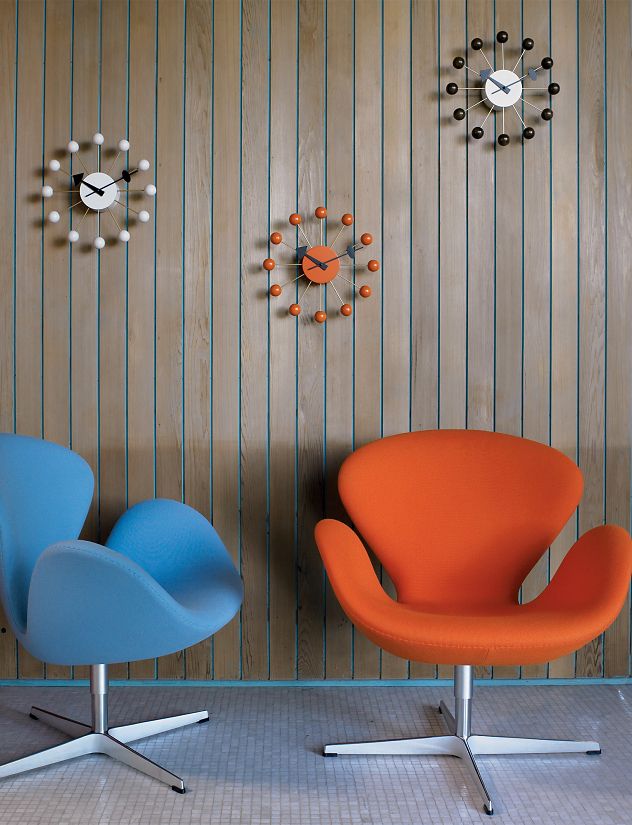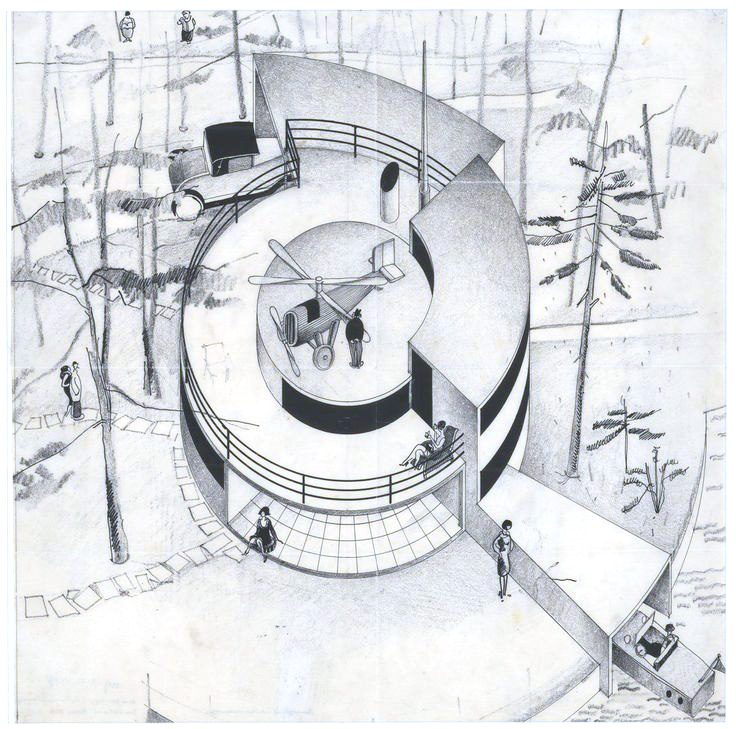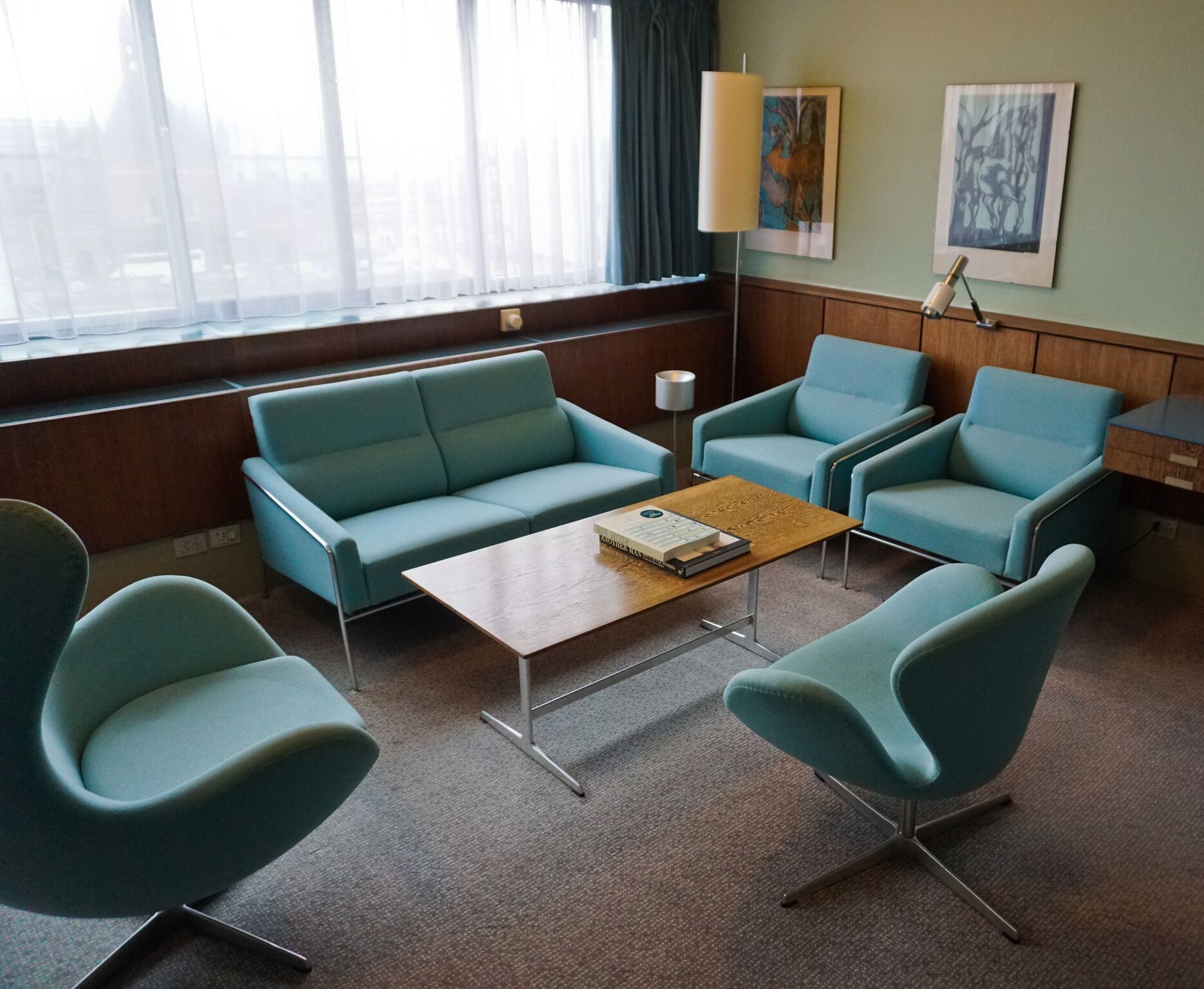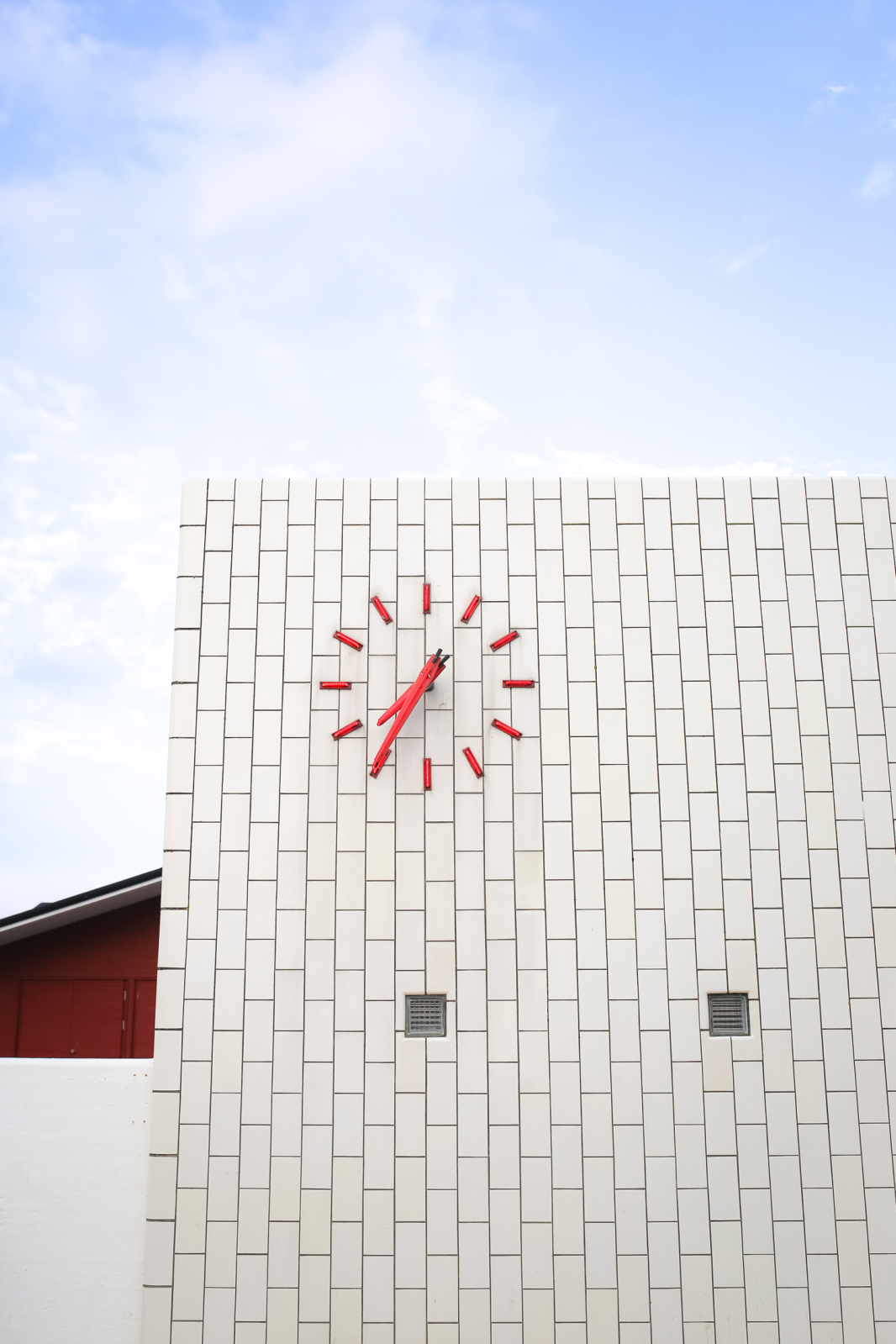Words: Kris Scott
Note: Join Design Within Reach and Modern In Denver this Saturday morning for a celebration of Arne Jacobsen’s body of work — and his Egg Chair in particular. This event will include some breakfast treats, mimosas, prizes and a treasure hunt. 2701 E. First Ave., Denver. RSVP here.
who can design an object as small as a bottle opener yet also create something as massive as a skyscraper, and achieve greatness doing both. Arne Jacobsen was one of the mid-20th century’s most highly regarded designers. His prolific design portfolio included those items mentioned above as well as bathroom fixtures, furniture, textiles, cutlery and many structures, from government buildings to banks to gas stations.
Born in Copenhagen in 1902, Jacobsen studied architecture from 1924-1927 at the Royal Danish Academy of Fine Arts. Influenced by the work of Le Corbusier, Gunnar Asplund and Ludwig Mies van der Rohe, Jacobsen created his first buzz in 1929 when he collaborated with Flemming Lessen on the “House of the Future” for a Danish Architect’s Association competition. The design, which was subsequently constructed full-scale for the Forum Copenhagen, was a glass and concrete spiral-shaped, flat-roofed house that included a garage, boathouse and helicopter pad as well as features such as a conveyor tube for mail and a kitchen stocked with ready-made meals.


That project was an early version of Jacobsen’s dedication to gesamtkunstwerk, a German word meaning “total work of art” or “synthesis of the arts.” The term is often applied to architectural projects that go beyond building design to include details such as doorknobs, furniture, art and the like — ultimately bringing harmony and cohesion to an entire project.
Perhaps the best example of this dedication in Jacobsen’s work was the SAS Royal Hotel, which he comprehensively designed between 1958-60. In addition to the iconic building, Jacobsen fixed his creative vision on every detail of the project, from custom lighting and carpeting in guest rooms to the glasses and cutlery used in the restaurant. It was during this project that two of his most iconic chair designs were born: the Egg and Swan chairs.
The hotel, now known as the Radisson Collection Royal Hotel, underwent a Space Copenhagen-helmed renovation that was completed in 2018. Tim Vander Wall of Denver’s Studio IAP, a company that sells Jacobsen’s iconic VOLA bathroom taps, visited Copenhagen after the renovation was complete and was inspired by the result, which brought much of the hotel back to Jacobsen’s original intent. “Viewing the space allows you to step back in time and makes you appreciate the detail and level of design. Everything from the doorknob detail and wall-hung boxes that included a hinged top with a mirror and integral light, to the lighting fixtures that slide on rails, to all the furniture — the total design and the importance of scale made you believe that he paid attention to every detail.”


Vander Wall also visited another of Jacobsen’s works, the Skovshoved Petrol Station, a place where Copenhagen’s residents can still fill their cars up with gas today. Designed in 1936 and restored in 2002, the building’s exterior is striking for its projecting oval canopy, which protects motorists from daylight’s elements while also providing lighting at night (it is illuminated from beneath).
“Natural materials such as wood, granite and leather, and the importance of bringing the outdoors inside are characteristics of Scandinavian design that is timeless. These materials make you feel more warm and natural,” says Vander Wall when asked about Jacobsen’s enduring popularity and relevance. “Jacobsen’s designs embrace simple and modern objects and they make them more functional and humanistic.”
For more details on other Jacobsen-designed items, as well as where you can purchase many of them today, click here.